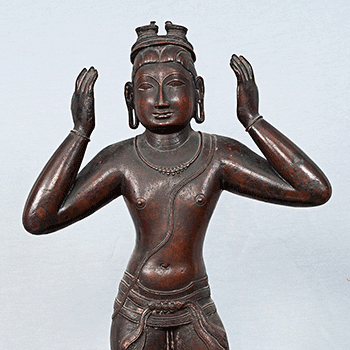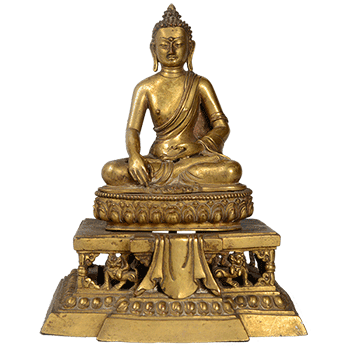This poised sculpture of Nataraja belongs to the medieval era and originated in South India under the patronage of the Chola Dynasty in 12 CE. It is 96.0 cm tall, 82.8 cm wide and 28.2 cm in depth. It is currently on display at the National Museum, New Delhi in the gallery of Chola Bronzes.




























